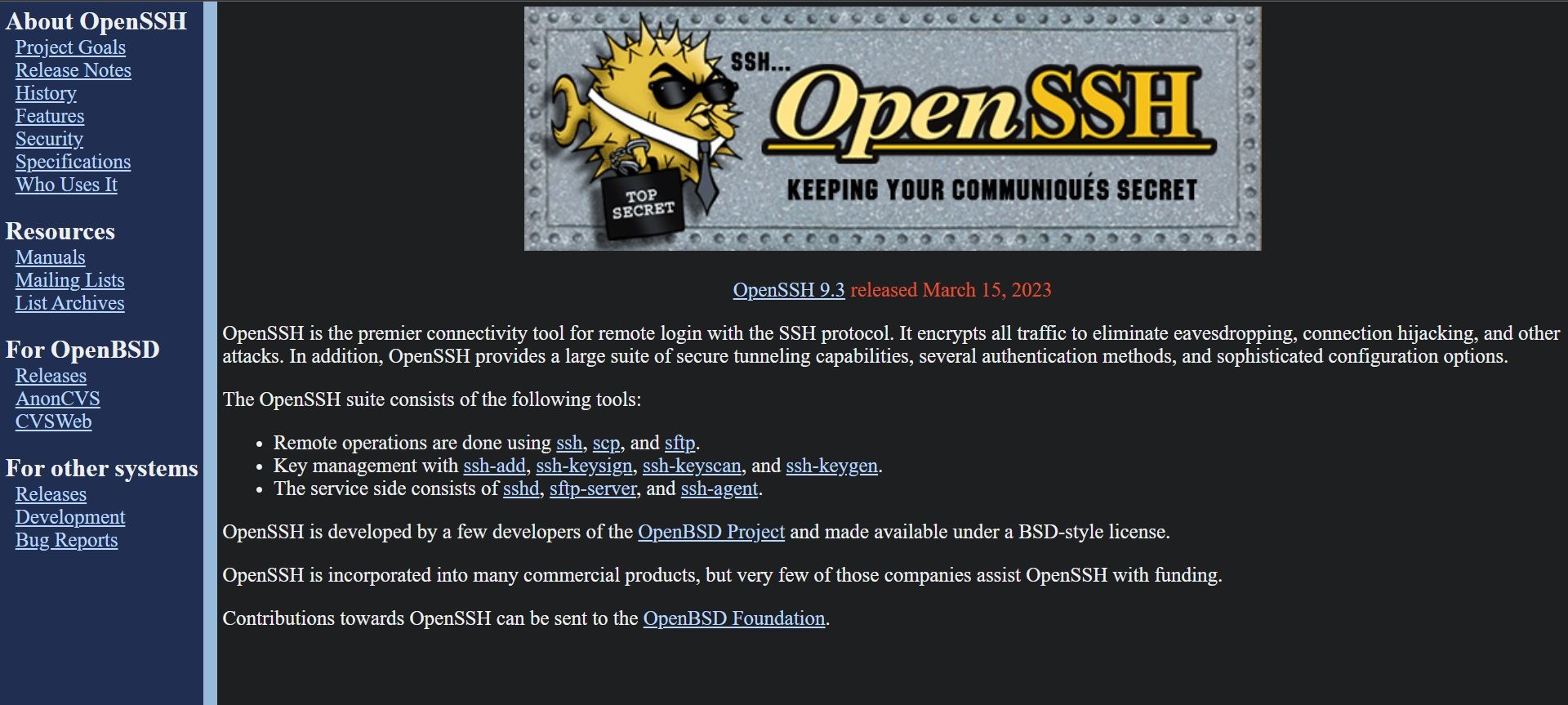Looking for the best SSH remote IoT free solutions? You've come to the right place! Whether you're a hobbyist tinkering with home automation or a developer working on large-scale IoT projects, having secure and reliable access to your devices is crucial. SSH remote access can be a game-changer, allowing you to manage your IoT devices from anywhere in the world. But how do you find the best SSH remote IoT free options without breaking the bank? Let's dive into the world of remote IoT and uncover the secrets!
IoT technology has exploded in recent years, with billions of devices connected worldwide. Managing these devices remotely is no longer a luxury but a necessity. That's where SSH comes in. Secure Shell (SSH) provides a secure way to access and control your IoT devices, ensuring your data remains protected. But finding the right SSH remote IoT free solution can be overwhelming with so many options available.
In this article, we'll explore everything you need to know about SSH remote IoT free solutions, including how they work, the best options available, and tips to make the most out of them. By the end, you'll have a clear understanding of what to look for and how to implement these tools in your projects. So, buckle up and let's get started!
- Sydney Sweeney Nude Photos Sex Tape Leaks Get The Details
- Wings Citi Cafe In Carrollton Ga Menu Deals Reviews
Table of Contents
- What is SSH Remote IoT?
- Why Choose Free SSH Remote IoT?
- Biography of SSH IoT
- Top SSH Remote IoT Free Options
- How to Set Up SSH Remote IoT
- Common SSH Remote IoT Challenges
- Tips for Securing SSH Remote IoT
- Best Practices for Remote IoT
- Future of SSH Remote IoT
- Conclusion
What is SSH Remote IoT?
SSH remote IoT refers to the use of Secure Shell (SSH) protocols to remotely access and manage Internet of Things (IoT) devices. This technology allows users to connect to their IoT devices securely over the internet, making it easier to monitor, control, and troubleshoot them from anywhere. With SSH, you can execute commands, transfer files, and even manage configurations without needing physical access to the device.
SSH remote IoT is particularly useful for developers and hobbyists who need to manage multiple devices spread across different locations. By leveraging SSH, you can ensure that your data remains encrypted and protected from unauthorized access, reducing the risk of cyberattacks.
How Does SSH Work in IoT?
SSH works by creating an encrypted tunnel between your local machine and the remote IoT device. This tunnel ensures that all communication between the two endpoints remains secure and private. When you connect to an IoT device via SSH, you authenticate yourself using credentials like usernames and passwords or SSH keys. Once authenticated, you gain access to the device's command-line interface (CLI), allowing you to perform various tasks.
- Cherrbearr22 Tiktok Insights Trends What You Need To Know
- Jeanine Pirros Age More Everything You Need To Know
Why Choose Free SSH Remote IoT?
Choosing a free SSH remote IoT solution can save you a lot of money while still providing robust features. Many paid solutions offer advanced features that may not be necessary for smaller projects or personal use. Free SSH remote IoT options, on the other hand, often provide enough functionality to meet the needs of most users.
Here are some reasons why you might want to consider free SSH remote IoT solutions:
- Cost-Effective: No need to spend money on expensive subscriptions or licenses.
- Flexibility: Most free solutions are open-source, allowing you to customize them to fit your specific needs.
- Community Support: Many free SSH remote IoT tools have active communities where you can find help and resources.
- Learning Opportunity: Using free tools can be a great way to learn more about SSH and IoT technology.
Biography of SSH IoT
SSH was originally developed in 1995 by Tatu Ylönen as a secure alternative to the insecure Telnet protocol. Over the years, SSH has evolved into a powerful tool used in various fields, including IoT. The integration of SSH with IoT devices has revolutionized the way we manage and interact with connected devices.
Below is a brief overview of key milestones in the development of SSH for IoT:
| Year | Milestone |
|---|---|
| 1995 | Creation of SSH by Tatu Ylönen |
| 2000s | Adoption of SSH in enterprise networks |
| 2010s | Integration of SSH with IoT devices |
| 2020s | Widespread use of SSH in IoT projects |
Top SSH Remote IoT Free Options
There are several excellent SSH remote IoT free options available today. Each of these tools offers unique features and benefits, making it important to choose the one that best fits your needs. Here are some of the top SSH remote IoT free options:
1. OpenSSH
OpenSSH is one of the most popular SSH implementations and is widely used in IoT projects. It's open-source, highly customizable, and supports a wide range of platforms. With OpenSSH, you can easily set up secure connections to your IoT devices and manage them remotely.
2. Bitvise SSH Client
Bitvise SSH Client is another great option for SSH remote IoT. It offers a user-friendly interface and supports advanced features like SFTP file transfers and port forwarding. While the client itself is free, some advanced features require a paid license.
3. PuTTY
PuTTY is a lightweight and easy-to-use SSH client that's perfect for IoT projects. It supports multiple protocols, including SSH, Telnet, and Rlogin, making it a versatile tool for remote access. PuTTY is free and available for Windows, Linux, and macOS.
How to Set Up SSH Remote IoT
Setting up SSH remote IoT is relatively straightforward, especially if you're using one of the tools mentioned above. Here's a step-by-step guide to help you get started:
- Install SSH Server: Begin by installing an SSH server on your IoT device. Most Linux-based devices come with OpenSSH pre-installed, but you may need to enable it.
- Configure Firewall Settings: Ensure that your firewall allows incoming connections on port 22 (the default SSH port).
- Install SSH Client: Download and install an SSH client on your local machine. PuTTY, OpenSSH, and Bitvise SSH Client are all excellent choices.
- Connect to the Device: Use the SSH client to connect to your IoT device by entering its IP address and credentials.
- Test the Connection: Once connected, try running a few basic commands to ensure everything is working properly.
Common SSH Remote IoT Challenges
While SSH remote IoT offers many benefits, there are also some challenges you may encounter. Here are a few common issues and how to overcome them:
- Connection Issues: Make sure your device's IP address is correct and that your firewall settings allow SSH traffic.
- Authentication Problems: Double-check your credentials and ensure that SSH keys are properly configured if you're using them.
- Performance Bottlenecks: Optimize your network settings and consider upgrading your hardware if necessary.
Tips for Securing SSH Remote IoT
Security should always be a top priority when working with SSH remote IoT. Here are some tips to help you secure your connections:
- Use Strong Passwords: Avoid using weak or easily guessable passwords for your SSH accounts.
- Enable Two-Factor Authentication: Add an extra layer of security by requiring two-factor authentication for SSH access.
- Disable Root Login: Prevent direct root access to reduce the risk of unauthorized access.
- Change Default Port: Change the default SSH port (22) to a non-standard port to make it harder for attackers to find.
Best Practices for Remote IoT
Adopting best practices for remote IoT can help you avoid common pitfalls and ensure smooth operation. Here are some recommendations:
- Regularly Update Firmware: Keep your IoT device firmware up to date to protect against vulnerabilities.
- Monitor Logs: Regularly review your SSH logs to detect any suspicious activity.
- Limit Access: Restrict SSH access to only those who need it, using IP whitelisting if possible.
- Backup Data: Regularly back up important data to prevent loss in case of a security breach.
Future of SSH Remote IoT
The future of SSH remote IoT looks promising, with advancements in technology driving innovation in this field. As more devices become connected, the demand for secure and reliable remote access solutions will continue to grow. We can expect to see improvements in encryption, authentication, and performance, making SSH even more powerful and versatile.
Additionally, the rise of edge computing and 5G networks will further enhance the capabilities of SSH remote IoT, enabling faster and more efficient communication between devices. This will open up new possibilities for applications in industries such as healthcare, manufacturing, and transportation.
Conclusion
In conclusion, the best SSH remote IoT free solutions offer a cost-effective and flexible way to manage your IoT devices remotely. By understanding how SSH works, choosing the right tools, and following best practices, you can ensure secure and reliable access to your devices from anywhere in the world.
We encourage you to try out some of the options discussed in this article and see which one works best for your projects. Don't forget to leave a comment below sharing your experiences with SSH remote IoT and let us know if you have any questions. Happy tinkering and stay connected!



Detail Author:
- Name : Elroy Monahan
- Username : cbogan
- Email : vwolff@christiansen.com
- Birthdate : 1981-03-24
- Address : 83917 Runolfsson Key Suite 579 Ryanburgh, VT 64346-2530
- Phone : 1-985-471-6060
- Company : Watsica-Fadel
- Job : Self-Enrichment Education Teacher
- Bio : Esse vel blanditiis maxime repellendus exercitationem adipisci. Ullam voluptatem quidem odio rerum. Aut qui quia molestiae. Molestiae aut ratione amet recusandae.
Socials
facebook:
- url : https://facebook.com/jarod1428
- username : jarod1428
- bio : Illum occaecati dolores rerum non voluptatem sed vitae sint.
- followers : 3289
- following : 842
twitter:
- url : https://twitter.com/jarod.davis
- username : jarod.davis
- bio : Et ut ducimus beatae. Ea eum aut perferendis excepturi voluptas omnis. Et quia facilis veniam nihil ipsam voluptas deleniti. Dolores eos iste illo dolor.
- followers : 4515
- following : 343
linkedin:
- url : https://linkedin.com/in/jaroddavis
- username : jaroddavis
- bio : Dolores porro delectus id et et.
- followers : 6460
- following : 1336
tiktok:
- url : https://tiktok.com/@davis2017
- username : davis2017
- bio : Nemo sint et perspiciatis veritatis. Inventore ut aut nostrum rerum totam at.
- followers : 3593
- following : 1996
instagram:
- url : https://instagram.com/jarod.davis
- username : jarod.davis
- bio : Expedita voluptate voluptatem corrupti consectetur commodi nihil. Cum explicabo et quibusdam ipsam.
- followers : 2640
- following : 1194